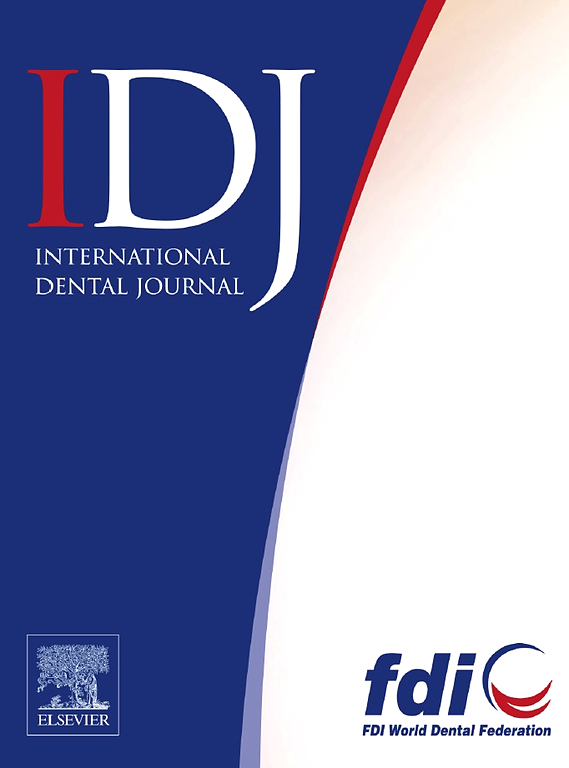Association Between Serum Albumin and Periodontitis Across Disease Subgroups: A Cross-Sectional Study
IF 3.2
3区 医学
Q1 DENTISTRY, ORAL SURGERY & MEDICINE
引用次数: 0
Abstract
Purpose
This study examines the association between serum albumin (sALB) levels and periodontitis severity, focusing on subgroup differences and nonlinear relationships. It extends previous findings, which were limited to chronic kidney disease (CKD) patients.
Materials and methods
This cross-sectional study utilized data from 8352 participants in the NHANES 2009 to 2014 survey cycles. sALB and periodontitis were the exposure and outcome variables. Logistic regression models and restricted cubic spline curves were used to investigate the relationship between the two. Additionally, subgroup and interaction analyses were conducted to assess the stability of the findings. All statistical analyses considered the complex survey design.
Results
A significant negative association was observed between sALB and periodontitis status (aOR 0.94, 95% confidence intervals: 0.93-0.96, P value <.001). The strength of this association may be influenced by participants’ gender, CKD status, and hypertension status. Among participants with sALB levels below 35 g/L (defined as hypoalbuminemia), no significant association with periodontitis was observed, even in those with CKD. Restricted cubic spline analysis demonstrated an inverted U-shaped relationship between sALB levels and periodontitis, with a threshold effect at 38 g/L. Above this inflection point, higher sALB levels were significantly associated with a lower prevalence of periodontitis (P < .001).
Conclusions
ALB levels were inversely associated with moderate and severe periodontitis, with an inverted U-shaped relationship observed in this study. The differences among subgroups warrant further research.
Clinical relevance
Maintaining appropriate sALB levels may be beneficial for periodontal health. Further research is needed to confirm its role in periodontitis prevention and treatment.
跨疾病亚组血清白蛋白与牙周炎的关系:一项横断面研究
目的本研究探讨血清白蛋白(sALB)水平与牙周炎严重程度之间的关系,重点研究亚组差异和非线性关系。它扩展了先前的发现,这些发现仅限于慢性肾脏疾病(CKD)患者。材料和方法本横断面研究利用了2009年至2014年NHANES调查周期中8352名参与者的数据。sALB和牙周炎是暴露和结局变量。采用Logistic回归模型和限制三次样条曲线来研究两者之间的关系。此外,还进行了亚组分析和相互作用分析,以评估结果的稳定性。所有的统计分析都考虑了复杂的调查设计。结果sALB与牙周炎状态呈显著负相关(aOR 0.94, 95%可信区间:0.93 ~ 0.96,P值<; 0.001)。这种关联的强度可能受到参与者性别、CKD状态和高血压状态的影响。在sALB水平低于35 g/L(定义为低白蛋白血症)的参与者中,即使在CKD患者中,也没有观察到与牙周炎的显著关联。限制三次样条分析显示sALB水平与牙周炎呈倒u型关系,在38 g/L时具有阈值效应。在这个拐点以上,较高的sALB水平与较低的牙周炎患病率显著相关(P <;措施)。结论salb水平与中度和重度牙周炎呈倒u型关系。亚组之间的差异值得进一步研究。维持适当的sALB水平可能对牙周健康有益。需要进一步的研究来证实其在牙周炎预防和治疗中的作用。
本文章由计算机程序翻译,如有差异,请以英文原文为准。
求助全文
约1分钟内获得全文
求助全文
来源期刊

International dental journal
医学-牙科与口腔外科
CiteScore
4.80
自引率
6.10%
发文量
159
审稿时长
63 days
期刊介绍:
The International Dental Journal features peer-reviewed, scientific articles relevant to international oral health issues, as well as practical, informative articles aimed at clinicians.
 求助内容:
求助内容: 应助结果提醒方式:
应助结果提醒方式:


